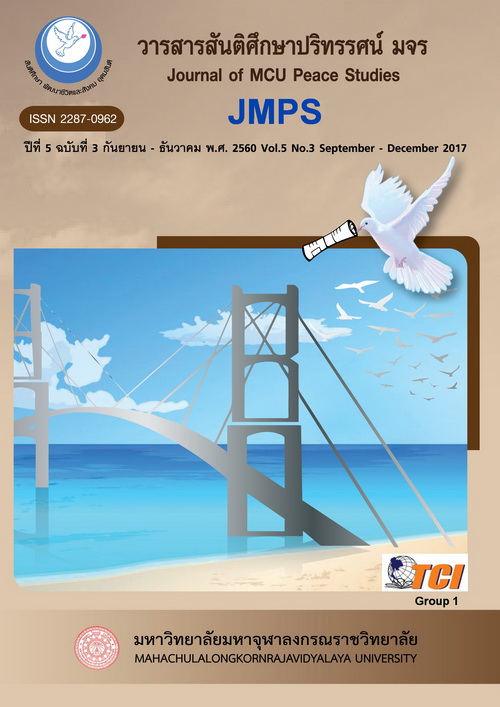An Analytical study of the concept of perception in Theravada Buddhist Philosophy
Main Article Content
บทคัดย่อ
This research found that the concept of perception in Theravada Buddhist Philosophy, which is a perception that one employs in approaching one’s externality and internality that came into contact that is categorized in three main areas, namely external objects, internal organs, and the mind or consciousness; these three are the areas in which perception is based upon. These are the tools of cognition and comprehension. Through pure perception, things as they are can be realized. This process is known as insight meditation. Knowledge derived from insight contemplation is considered ‘pure’ knowledge, occurring without the taint of external reality, from the supposed truth and true truth by the comprehension and judging of the human mind by the use of thought to approach and proof the truth. The 4 Noble Truths under the Buddhist philosophy of perception is thought to train the mind to excellency where the mind comprehend levels of wisdom; Knowledge derived from Scriptural Study (Sutamaya Panna), knowledge derived from Thinking (Cintamaya Panna), and Knowledge derived from Mental Development (Bhawanamaya Panna), to train oneself in the area of morality, concentration, and wisdom and to train in the Eightfold Noble truth which is revered to be the true truth without taint in Theravada Buddhist Philosophy belief system. According to John Locke, the true knowledge lies in two forms; (1) sensory experience and (2) mental experience, of which is the process of perception approaching externality and relationship between the primary and secondary experiences. These sources are believed as the source of knowledge for the mind. Under this understanding, the learning objects are (1) objects that can be seen by the eyes (objects of sight), (2) sounds that the ear can hear (objects of hearing), (3) scent that the nose can sense (object of scent), (4) taste that the tongue can taste (object of taste), (5) objects of touch; whether hot, cold, hard, soft.
In the Nyaya philosophy, perception is categorized in two kinds; (1) the complete knowledge gained from 4 sources; perception, inference, comparison, and testemony, and (2) incomplete knowledge which are memories, doubt, misconception, and argument. These 2 types of knowledge depend on sensory recognition and conception by the perceptual functions (eyes, ears, noses, tongue, body, and mind) to contact with external objects; visible objects, sounds, smell, taste, touch, and mental objects. There are 4 types of knowledge: (1) knowledge borne by the contact of external stimuli and individual’s perception, (2) knowledge by inference using existing knowledge or what the western idea called as Syllogism, (3) knowledge from induction borne by comparison and differentiation and matching, (4) knowledge gained by literal word of others.
From the analytical study of concept of perception in Theravada Buddhist Philosophy, it is found that the belief system of perception in all the three schools of thought namely, Theravada Buddhist Philosophy and that of John Locke’s toward ‘Nyaya’ or the source of perceptual knowledge is categorized into three groups which are rationalism, experientialism, and what is called intuition. From the concept of perception theory, borne the 3 types of perception; (1) knowledge from hearing, (2) inductive knowledge, (3) knowledge of truth borne of pure mindfulness that requires both external perception and internal perception without 3 contradictories which are (1) righteousness, (2) practical, (3) yield result. Referring to 3 theories of truth which are (1) Correspondence Theory, (2) Coherence Theory, (3) Pragmatism. These point out that the two truths; the conventional truth and ultimate truth, which being bound and governed by the law of nature (uncertainty, sorrow, unreal) are caused by its cause and the trained mind which contemplates its true nature that eventually the knowledge is ushered into existence.
Article Details
ทัศนะและความคิดเห็นที่ปรากฏในบทความในวารสาร ถือเป็นความรับผิดชอบของผู้เขียนบทความนั้น และไม่ถือเป็นทัศนะและความรับผิดชอบของกองบรรณาธิการ ยินยอมว่าบทความเป็นลิขสิทธิ์ของวารสาร


